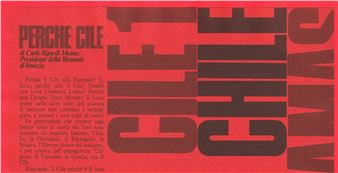Henry Chapman: Reading About War
RAINRAIN is pleased to present Reading About War, a solo exhibition by New York鈥揵ased artist and writer Henry Chapman. Comprising a new body of paintings, the exhibition reflects on the dissonance between private life and public catastrophe, created as Chapman settled into a new home with his wife while witnessing the ongoing destruction in Gaza. Set against broader global conditions of violence, complicity, and moral reckoning, these works hold together the contradictions of intimacy and upheaval, daily routine and political rupture鈥攅choing, in spirit, T.J. Clark鈥檚 post-9/11 reading of Poussin鈥檚 Landscape with a Man Killed by a Snake as a metaphor for the modern experience of catastrophe. As a person, a Jewish person, Chapman turns to image-making not to deliver answers but to remain with the tension of identity, responsibility, and silence.
Layers of contradiction emerge in Chapman鈥檚 juxtaposition of violent imagery and bright color. Several works depict weapons鈥攁xes, bulldozers, guns鈥攖hrough a combination of painterly gestures and monoprint techniques that produce both sharp and hazy impressions. Deliberate marks and swaths of poured paint contrast with unsettling subjects, prompting a reconsideration of the emotional associations tied to color. Images of trees appear repeatedly throughout the works: the magnolia tree outside Chapman鈥檚 home in Brooklyn is echoed in depictions of olive trees in Palestine鈥攕ymbols of livelihood that have been destroyed in conflict. Together, these two trees鈥攄ifferentiated by color鈥攆orm a visual and emotional opposition: one domestic and intact, the other distant and violently uprooted. Their conceptual pairing underscores a deeper contradiction that runs through the exhibition: between stability and destruction, care and erasure.
Chapman鈥檚 use of negative space introduces a rhythm of intervals that disrupt yet unify gesture, image, and text. Most of the texts that appear on his canvases originate from his own reflections. In Men in the Sun, however, he draws from the Palestinian author and political activist Ghassan Kanafani鈥檚 1962 novella of the same name, incorporating fragments of its text into painted vignettes of heat, memory, and displacement. Figurative imagery, abstract marks, color blocks, empty space, and language are loosely arranged into compositions that feel both fragmented and connected. This open structure becomes a way of holding contradiction鈥攂eauty and brutality, intimacy and distance鈥攚ithin the same visual field.
At a time when images are rapidly consumed and painting often retreats into fantasy, repetition, or market-driven taste, Chapman insists on it as a space of complexity, slowness, and moral tension. His refusal to separate personal life from political awareness, or aesthetics from ethical position, challenges easy narratives about the role of the artist today. These are not paintings that soothe or resolve鈥攖hey ask instead what it means to witness, to remain present, and to keep making in the face of it all.

Recommended for you
RAINRAIN is pleased to present Reading About War, a solo exhibition by New York鈥揵ased artist and writer Henry Chapman. Comprising a new body of paintings, the exhibition reflects on the dissonance between private life and public catastrophe, created as Chapman settled into a new home with his wife while witnessing the ongoing destruction in Gaza. Set against broader global conditions of violence, complicity, and moral reckoning, these works hold together the contradictions of intimacy and upheaval, daily routine and political rupture鈥攅choing, in spirit, T.J. Clark鈥檚 post-9/11 reading of Poussin鈥檚 Landscape with a Man Killed by a Snake as a metaphor for the modern experience of catastrophe. As a person, a Jewish person, Chapman turns to image-making not to deliver answers but to remain with the tension of identity, responsibility, and silence.
Layers of contradiction emerge in Chapman鈥檚 juxtaposition of violent imagery and bright color. Several works depict weapons鈥攁xes, bulldozers, guns鈥攖hrough a combination of painterly gestures and monoprint techniques that produce both sharp and hazy impressions. Deliberate marks and swaths of poured paint contrast with unsettling subjects, prompting a reconsideration of the emotional associations tied to color. Images of trees appear repeatedly throughout the works: the magnolia tree outside Chapman鈥檚 home in Brooklyn is echoed in depictions of olive trees in Palestine鈥攕ymbols of livelihood that have been destroyed in conflict. Together, these two trees鈥攄ifferentiated by color鈥攆orm a visual and emotional opposition: one domestic and intact, the other distant and violently uprooted. Their conceptual pairing underscores a deeper contradiction that runs through the exhibition: between stability and destruction, care and erasure.
Chapman鈥檚 use of negative space introduces a rhythm of intervals that disrupt yet unify gesture, image, and text. Most of the texts that appear on his canvases originate from his own reflections. In Men in the Sun, however, he draws from the Palestinian author and political activist Ghassan Kanafani鈥檚 1962 novella of the same name, incorporating fragments of its text into painted vignettes of heat, memory, and displacement. Figurative imagery, abstract marks, color blocks, empty space, and language are loosely arranged into compositions that feel both fragmented and connected. This open structure becomes a way of holding contradiction鈥攂eauty and brutality, intimacy and distance鈥攚ithin the same visual field.
At a time when images are rapidly consumed and painting often retreats into fantasy, repetition, or market-driven taste, Chapman insists on it as a space of complexity, slowness, and moral tension. His refusal to separate personal life from political awareness, or aesthetics from ethical position, challenges easy narratives about the role of the artist today. These are not paintings that soothe or resolve鈥攖hey ask instead what it means to witness, to remain present, and to keep making in the face of it all.












